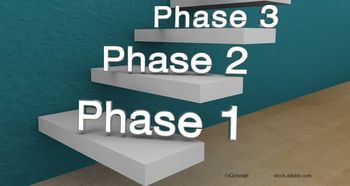
- Ophthalmology Times Europe November/December 2025
- Volume 21
- Issue 6
- Pages: 29 - 31
Revisiting an overlooked solution for high myopia
Phakic IOLs deliver a “wow” factor to refractive surgery patients, says Matteo Piovella, MD
The myopia epidemic is consistently at the forefront of the global ophthalmology conversation. Accordingly, clinicians are exploring new options to help serve patients with myopia and re-examining technologies that deserve new consideration for specific patient groups. For example, phakic IOLs show potential as a transformative option for patients with moderate to high myopia. Matteo Piovella, MD, president of the Italian Society of Ophthalmology, shared his insights on phakic IOLs at this year’s American Academy of Ophthalmology (AAO) meeting in Orlando, Florida. Dr Piovella argued that, while LASIK and photorefractive keratectomy (PRK) remain driving forces in refractive surgery, phakic IOLs offer a compelling alternative that combines rapid visual recovery and long-term stability for maximum patient benefit.
Speaking to the Eye Care Network, Dr Piovella provided a behind-the-scenes of his AAO course. He said the advancing technology in phakic IOLs has dramatically improved safety and predictability. Instead of a niche intervention, phakic IOLs could present a mainstream solution for patients who fall outside the safe range for laser vision correction—but there are some hurdles. Economic barriers, misconceptions about the role of phakic IOLs and a persistent perception problem among clinicians are limiting the scope of this technology, he said. In this Q&A, Dr Piovella shares his practical guidance for phakic IOL use and theories about the broader role they might play in refractive surgery.
The below transcript has been edited for clarity.
Matteo Piovella, MD: Hi, I am Dr Matteo Piovella, from Milan, Italy, and I have been president of the Italian Society of Ophthalmology for the last 15 years.
Sheryl Stevenson, Eye Care Group Editorial Director: For those unfamiliar with phakic IOLs, could you provide a brief description of them and their intended use?
Matteo Piovella: Well, my experience: I started to adopt phakic IOLs 30 years ago. This course, which I presented at AAO, is the 31st on this topic, and we’ve presented at AAO 17 times now. So we have a huge [amount of] experience, because we’ve experienced all the complications of the beginning, all the genius ideas that did not work…we’ve learned how to make the patient safe, how we can avoid or detect early complications so we can have no damage. Then, the technology helps us dramatically, such as the programme adopted by [Dr] Roger Zaldivar, the ICL Guru programme, we have a 99% rate of getting the right vaulting of a phakic IOL, and that is a miracle.
Sheryl Stevenson: What are the key visual and refractive outcomes you have observed with phakic IOLs in patients with medium to high myopia?
How do they compare with other corrective options like LASIK or PRK?
Matteo Piovella: IOL is a very interesting topic because the majority of refractive surgeons and cataract surgeons, they try to do everything separately.
But it doesn’t work here. You need all the expertise of cataract surgery, the anterior chamber, and all the complications of crystalline lens and refractive surgery. Phakic IOL has a “Wow!” effect. The patient, the day after, sees so nicely that they forget to make a consultation later. We needed to offer them our expertise, to conduct consultations every 6 months, for life. Now, it’s less strict, because this was related to the complication rate that everybody knows. But now, the surgery has become safe, effective, and fantastic for the patient. And it is a [conservative surgery], but you have to remember, it is a temporary surgery. Every patient needs to [be advised] about this, so schedule the consultation.
Sheryl Stevenson: What are the primary safety considerations associated with phakic IOL implantation, particularly in high myopia cases?
Matteo Piovella: Now, we have the right information. Everybody knows that refractive laser vision correction is up to 6 D. This is [intended] to decrease the number of complications, because this is the first priority—no complications. Naturally, there can be exceptions, but the exceptions are a higher percent of complication rate, up to 50% or 60%. For this reason, phakic IOLs, initially, were only adopted for very high myopes, from 6 D. Now, everything works dramatically better if we take into consideration the experience of the last 25 years.
Sheryl Stevenson: How do patient satisfaction, quality of vision and long-term stability compare for phakic IOLs versus other surgical or non-surgical myopia treatments?
Matteo Piovella: Well, normally, the patients are really happy about everything. One more time, they do experience the “wow” effect.Something that is extraordinary [is that] some amount of astigmatism, in many patients, will be fine if you have not corrected it. That is really important. Astigmatic patients learn how to know their vision, what changes can be expected. They are the first to detect those changes. Naturally, patients experience vision changes when they are past 45 years old. So we try to perform this surgery when patients are about 20 years old, so they have the longest effect of the surgery.
Sheryl Stevenson: Do you expect the need for treatment for phakic IOLs to increase over the next several years?
Matteo Piovella: Well, phakic IOL is difficult. You need to be an expert in cataract and refractive surgery, and they try to divide the two things...At [ an earlier] time, that was good, but now we need to cooperate, to exchange experience, and that is the key to spreading this surgery. I think that the only difficulties are economic...and organisational. Economic, because phakic IOLs are considered in many countries aligned with cosmetic surgery, not [life-saving] surgery, only something that is not necessary. But the improvement [in patients with] high...and medium [myopia] is something that works effectively, and is not an aesthetic need. That patient’s [life is] changed, and they have the capacity to have a working time. It is a revolution. But every revolution, unfortunately, has someone who is not open-minded. To change and to apply phakic IOLs, you need to start from the beginning, many years ago, with a lot of complications, understanding that now every problem is better 99%, and that is important. They decide to be open-minded, to adopt something new, something difficult, because the surgery is very fast, 2 minutes, 3 minutes, but it’s not a race. It is not the 100 m at the Olympics. We need to save the ocular structure and get the best result. Also, we don’t need to perform iridectomy, because someone genius has the idea of a hole in the middle of the IOL. Straightforward things, but so effective. So sometimes simple things are dramatically positive.
Sheryl Stevenson: Do you see any trends, such as in reimbursement or payment, that might affect the use of phakic IOLs in clinical practice?
Matteo Piovella: Well, it’s not a trend. It’s a reality. For the last 15 years, I have met with healthcare ministers to explain the novelties, to explain that we can’t stop, to explain that this is a request and the right of the patient. But the current answer to clinicians is, “We are not organised enough. We have no economic resources.” And it is illogical, but they admit, “If you have something new for us, we have no possibility to support it.” I think that we need to make education from the point of view of the patient, because today, politically, in healthcare, only the requests coming from the patient are well supported. Absolutely, not from the companies—it’s not possible. We need to work gently, in a very cooperative and positive way, to vocalise what the patient needs, not what an eye doctor needs.
Matteo Piovella, MD | E: [email protected]
Piovella is president of the Italian Ophthalmological Society. He has a private practice in Monza, near Milan, Italy.
Articles in this issue
Newsletter
Get the essential updates shaping the future of pharma manufacturing and compliance—subscribe today to Pharmaceutical Technology and never miss a breakthrough.










































